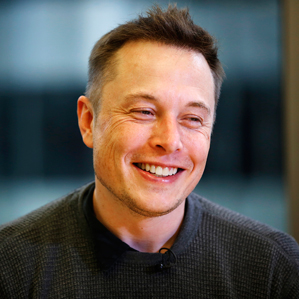
A Suíça é responsável por apenas 0,1% das emissões globais de CO2. (Keystone)
Por Luigi Jorio, con la collaborazione di Gaby Ochsenbein, swissinfo.ch 12. Novembro 2013 - 11:00
O último relatório sobre o clima confirma a responsabilidade do homem no aquecimento terrestre. O mundo político agora é chamado a agir para reduzir as emissões. Mas o que podem fazer pequenos países como a Suíça, cujo impacto sobre o clima global é praticamente nulo? Foi a o perguntamos a representantes de diversos setores.
Ioane Teitiota è o primeiro e provavelmente não será o último. O homem de Kiribati, uma ilhota do Pacifico, perdeu sua casa, invadida pela água. Ele se refugiou na Nova Zelândia, onde pediu asilo alegando um motivo sem precedentes: mudança climática.
O resultado de seu pedido é incerto. Nenhuma lei reconhece o aquecimento global como motivo para conceder asilo. O certo, porém, é que o aumento do nível do mar é provocado pela atividade humana. Em seu último relatório, O Grupo Intergovernamental de Especialistas em Mudança Climática (IPCC) confirma que 95% do aquecimento global é de responsabilidade antropogênica.
Para os pesquisadores, a ciência fez sua parte. Agora cabe à política agir. A reação não deve demorar, advertem os climatologistas. Dois terços do orçamento para de diminuir os gases de efeito estufa – ou seja a quantidade máxima de emissões se quisermos manter em 2°C o aumento da temperatura média do globo- já foram utilizados.
Muitos esforços são esperados principalmente dos países que produzem mais CO2.
A Suíça, responsável por cerca de 0,1% das emissões globais, está entre os “pequenos” poluidores. Mesmo que cessasse suas emissões, a consequência sobre o clima global seria insignificante. Então por que agir?

Na Suíça, o tráfego é o principal responsável das emissões de CO2. “Os automóveis e a calefação não emitem somente CO2, mas também outros poluentes”, acrescenta o porta-voz do Greenpeace Suíça, Clément Tolusso.
Embora a qualidade do ar melhore de ano em ano, os valores do ozônio, da poeira final do azoto continuam muito elevados, afirma o último relatório da Rede Nacional Suíça de Observação dos Poluentes Atmosféricos, publicado no início de outubro. Em 2012, o objetivo de redução de C02 na Suíça não foi atingido.
Reduzindo o CO2 contribuímos a proteger não somente o clima, mas nossa própria saúde, o que nos beneficia diretamente”, sublinha Clément Tolusso.
«Riducendo il CO2 contribuiamo a proteggere non solo il clima, ma pure la nostra salute, ciò che è direttamente a nostro beneficio», sottolinea Clément Tolusso.

Uma pessoa na Suíça emite cerca de seis toneladas de C02 por ano. Na realidade, essa cifra é mais elevada, observa Urs Neu do Fórum Suíço sobre o Clima e Mudança Global (Pro Clim). “Também temos de considerar, de fato, as emissões geradas por produtos importados.”
Clima, energia e medidas a serem tomadas, sob o ângulo suíço. [...]
Em um estudo de 2010, os cientistas da organização americana Carnegie Institution for Science demonstraram que um terço das emissões atribuídas ao consumo de bens e serviços nos países ricos vinham de fora de suas fronteiras. Alguns países, entre eles a Suíça, “deslocalizam” suas metas de CO2, sublinha o estudo.
Para Regula Rytz, deputada federal ecologista na Câmara suíça, devemos fixar limites para a importação. “Os produtos que comportam altas emissões de CO2 não devem ser importados”. Na Suíça, acrescenta Regula Rytz, temos de agir no setor de transportes. “Por exemplo introduzindo uma taxa sobre o CO2 para os combustíveis e adotar normas mais severas para os gases no escapamento dos carros.”
Christian Wasserfallen, deputado federal do Partido Liberal Radical, acha que a Suíça deve evitar adotar medidas unilaterais, que podem prejudica-la. Pensar que a Suíça possa influenciar o clima global é pura pretensão, observa o deputado de centro-direita. “Precisamos sim é pressionar países emergentes como a China.”

Nova conferência sobre o clima
A 19a Conferência sobre o clima em Varsóvia, de11 al 22 de novembro de 2013, pretende concretizar a decisão tomada no ano passado em Doha (prorrogar o Protocolo de Kyoto até o final de 2020) e definir a estrutura do regime climático a adotar no futuro.
Em particular, discute-se como tornar operativo o Fundo Verde para o clima que a partir de 2020 deve mobilizar 100 bilhões de dólares por ano para aplicar em políticas climáticas nos países em desenvolvimento.
Em Varsóvia, a delegação suíça se empenha em obter medidas para redução real das emissões de gases de efeito estufa. Quer também o emprenho voluntário de todos os países de para definir um modo “preciso e transparente”, indica a Secretaria Federal do Meio Ambiente (UFAM). “Os países industrializados que não aderiram ao
Protocolo de Kyoto devem reduzir suas emissões de maneira equivalente aos países que aderiram” afirma um comunicado da UFAM de 30 de outubro.
A pesquisa suíça é vanguardista, afirma Andreas Schellenberger, da seção “Relações Climáticas e adaptação às mudanças” da Secretaria Federal do Meio Ambiente. “O país dispões de conhecimento, tecnologia e meios financeiros; deve, portanto, assumir sua responsabilidade e reduzir as emissões.”
No plano internacional, a Suíça já manifestou sua vontade de fazer avançar as coisas, explica à swissinfo.ch Franz Perrez, que representa a Suíça nas negociações ambientais internacionais. “Fazemos com propostas concretas e críveis. No ano passado em Doha, por exemplo, fizemos uma proposta muito ambiciosa: limitar transferir de um período a outro os certificados de redução de emissões não utilizados.”
É do nosso interesse agir, nota Franz Perrez. “A Suíça é particularmente afetada pela mudança climática. Além disso, se deixarmos todo o processo nas mãos das grandes potências, não creio que se possa avançar de maneira significativa.”

Se quiser convencer a maioria dos países a adotar uma política climática coordenada, é indispensável que a Suíça reduza suas emissões e comunique suas decisões, afirma Urs Näf, responsável de questões energéticas na Federação das Empresas Suíças (economiesuisse). “Assumir sua própria responsabilidade significa lançar um forte sinal internacional.”
É importante que os pequenos países façam pressão sobre as grandes potências, afirma Franz Perrez. Apesar da reticência de alguns governos, os negociadores suíços se dizem confiantes. “Creio que em um acordo global vinculativo. Será provavelmente diferente de Kyoto, mas estou certo que o oberemos até 2020.”



























